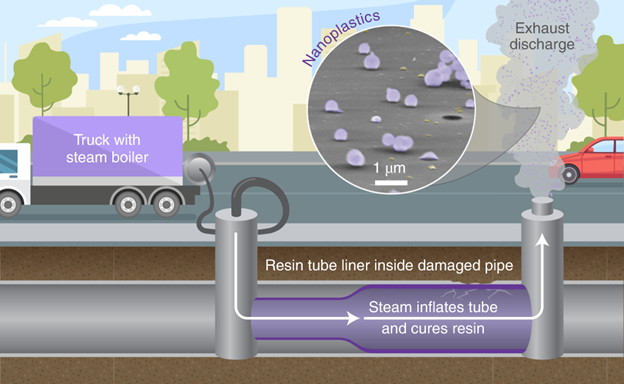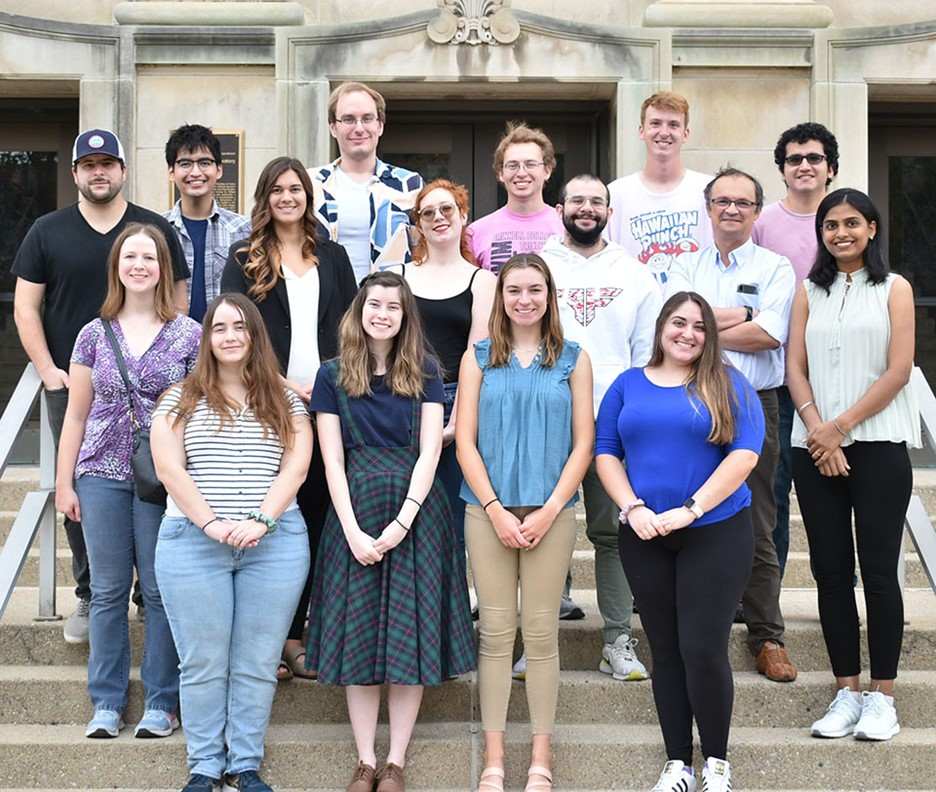Revealing a New Source of Environmental Nanoplastics
A common pipe repair method was found to discharge atmospheric nanoplastics

Alexander Laskin, a professor of analytical chemistry at Purdue University, and a team of researchers published research demonstrating that a common technology used to repair sewer pipes in urban areas emits nanoplastics into the atmosphere. (Photo courtesy of Adobe)
From the ocean to soils, nanoplastic pollution has made its way into many ecosystems on Earth. Now, new research from Purdue University, the Environmental Molecular Sciences Laboratory (EMSL), Pacific Northwest National Laboratory (PNNL), and Sonoma Technology reveals that nanoplastics may also be polluting the air.
In a paper published in Nature Nanotechnology, Alexander Laskin, a professor of analytical chemistry at Purdue University, and a team of researchers show that a common technology used to repair sewer pipes in urban areas is a culprit of directly emitting nanoplastics into the atmosphere. This new study is the first to reveal that nanoplastics can be directly aerosolized, with detrimental implications to air quality and the atmospheric environment.

Investigating environmental nanoplastics
Before this recent report, it was assumed that environmental nanoplastics originate from the weathering of larger plastic waste debris that are occasionally aerosolized by winds and other mechanical forces. The new study, however, shows that nanoplastics can be directly discharged into the atmosphere.
Researchers collected atmospheric waste samples at pipe repair sites that were using the “cured-in-place-pipe” installation method. In this method, a resin tube is inserted into cracked or leaky pipes, then inflated and cured in place often by hot steam. The tube is then cooled by blowing ambient air through the tube. Analysis of the exhaust discharge from either the hot steam curing or subsequent cooling reveals a significant presence of nanoplastics in the exhaust.
“This type of pipe repair is common in cities, where many people may be exposed to these nanoplastics in the air,” Laskin said. “No one has been studying this as one of the primary emitted air pollutants because, before this study, no one was aware that it even was a problem.”
To complete this research, Laskin worked closely with fellow Purdue professor Andrew Whelton, who had been studying the impact of the cured-in-place-pipe method for years. In a news release from Purdue University, Whelton acknowledges there is little independent testing or oversight of the effects of this method, despite it being used in urban areas.
“We never expected the airborne nanoplastics to be so abundant,” Laskin said. “Perhaps we need to evaluate additional technologies with respect to their emissions potential and threat to air quality.”

Studying the environment with EMSL
Alexander Laskin began his relationship with EMSL as an EMSL staff scientist in 1999–2017. Now, as a professor at Purdue University, Laskin maintains close collaborations with EMSL researchers, including one of his own former postdocs.
As one of 28 Department of Energy, Office of Science user facilities, EMSL provides shared laboratory resources, instrumentation, and expertise to the scientific community.
From there, he coordinated with EMSL researchers to perform chemical imaging analysis of samples from his group. EMSL chemists Swarup China and Brian O’Callahan and PNNL chemist Patrick El-Khoury assisted Ana Morales, lead author of the study from Purdue University, in determining the chemical fingerprints of the analyzed particles, their sizes, and shapes using instruments such as environmental scanning electron microscopy and Raman micro-spectroscopy.
“Between all of the researchers involved, our expertise in condensed phase particulate matter allowed us to identify uncommon pollutants,” Laskin said.
EMSL isn’t the only user facility to contribute to this work. The researchers also used the synchrotron-based X-ray scanning transmission microscope at the Advanced Light Source located at Lawrence Berkeley National Laboratory. This work was supported by grants from the National Science Foundation.

